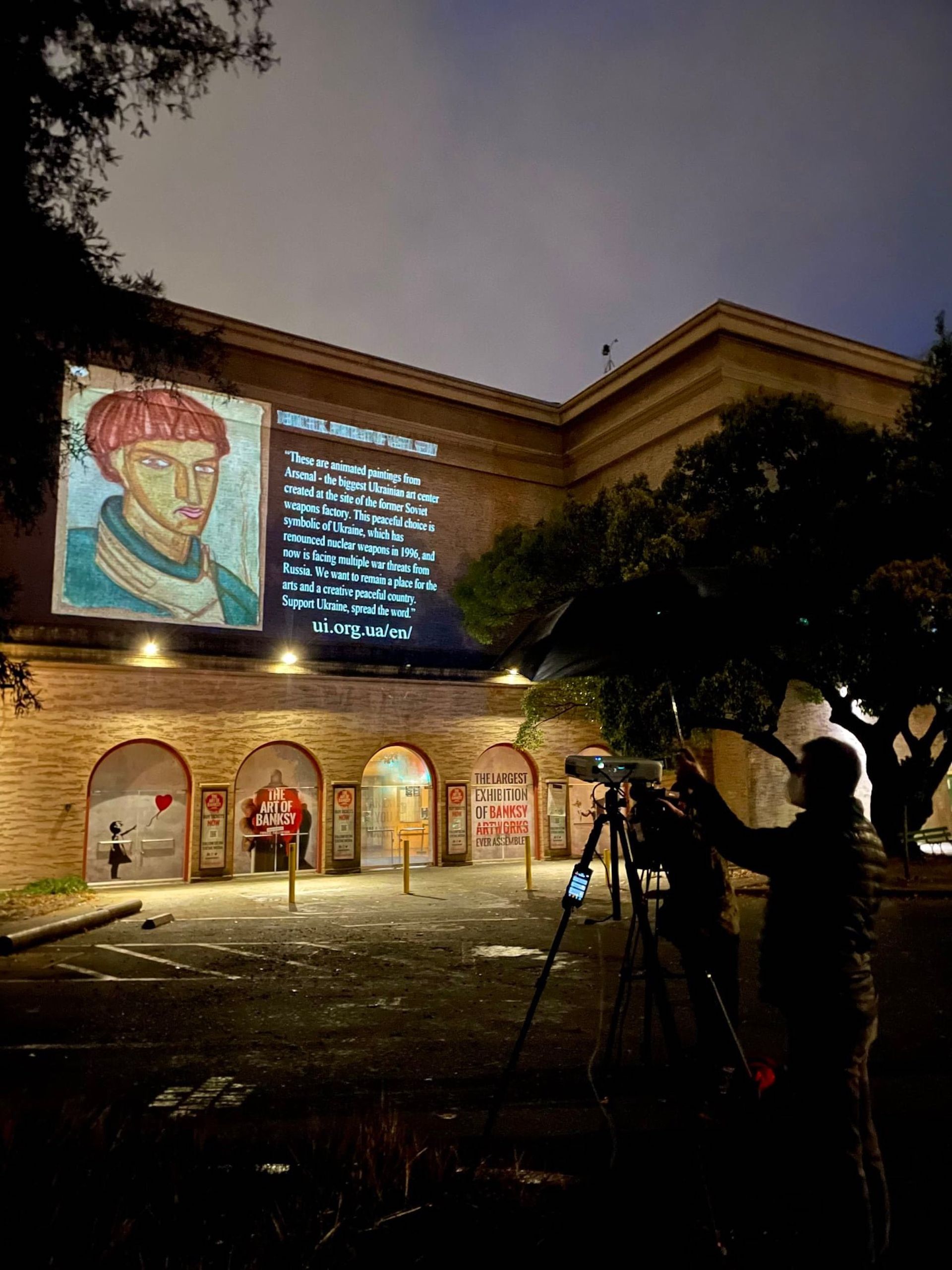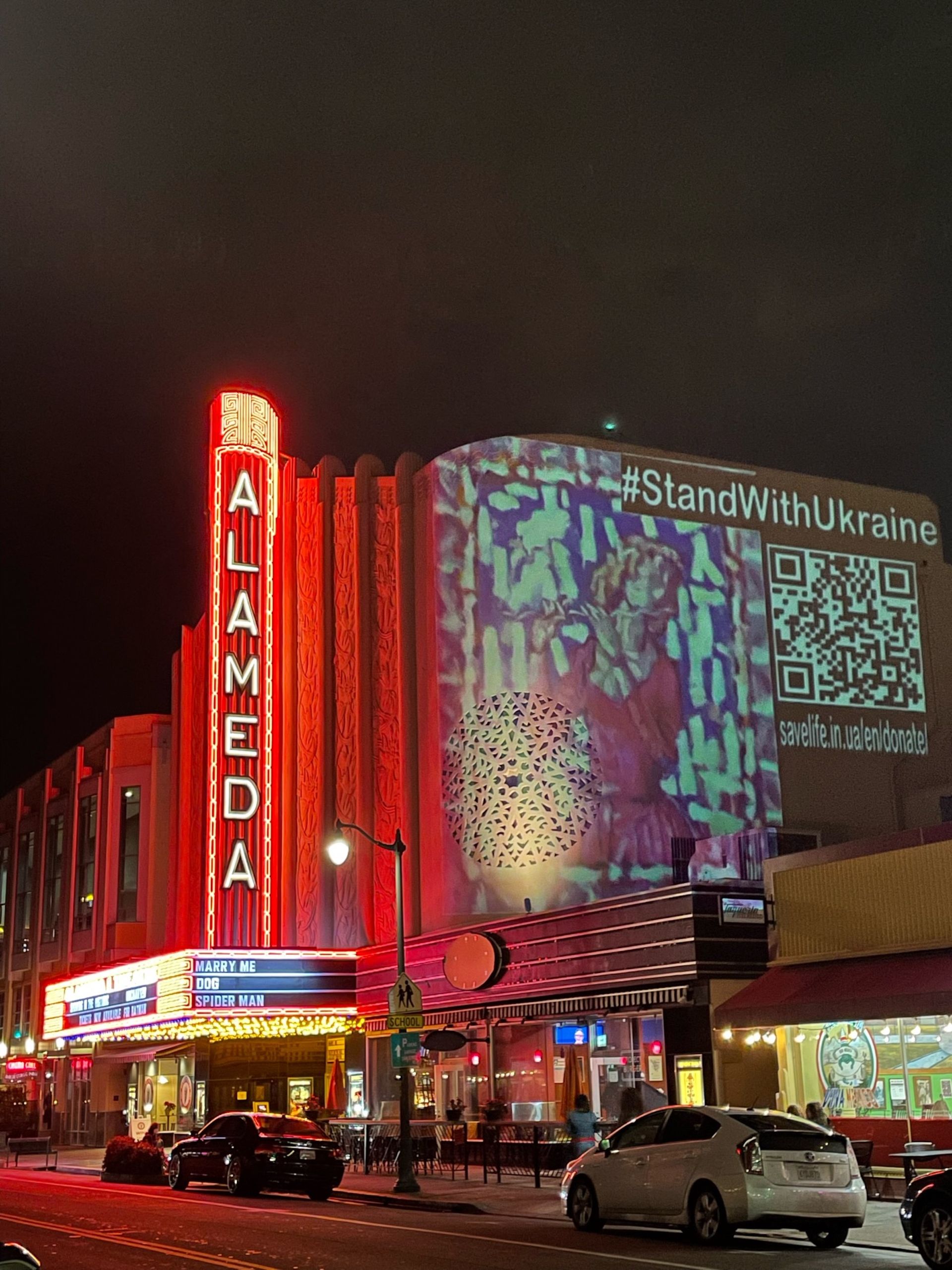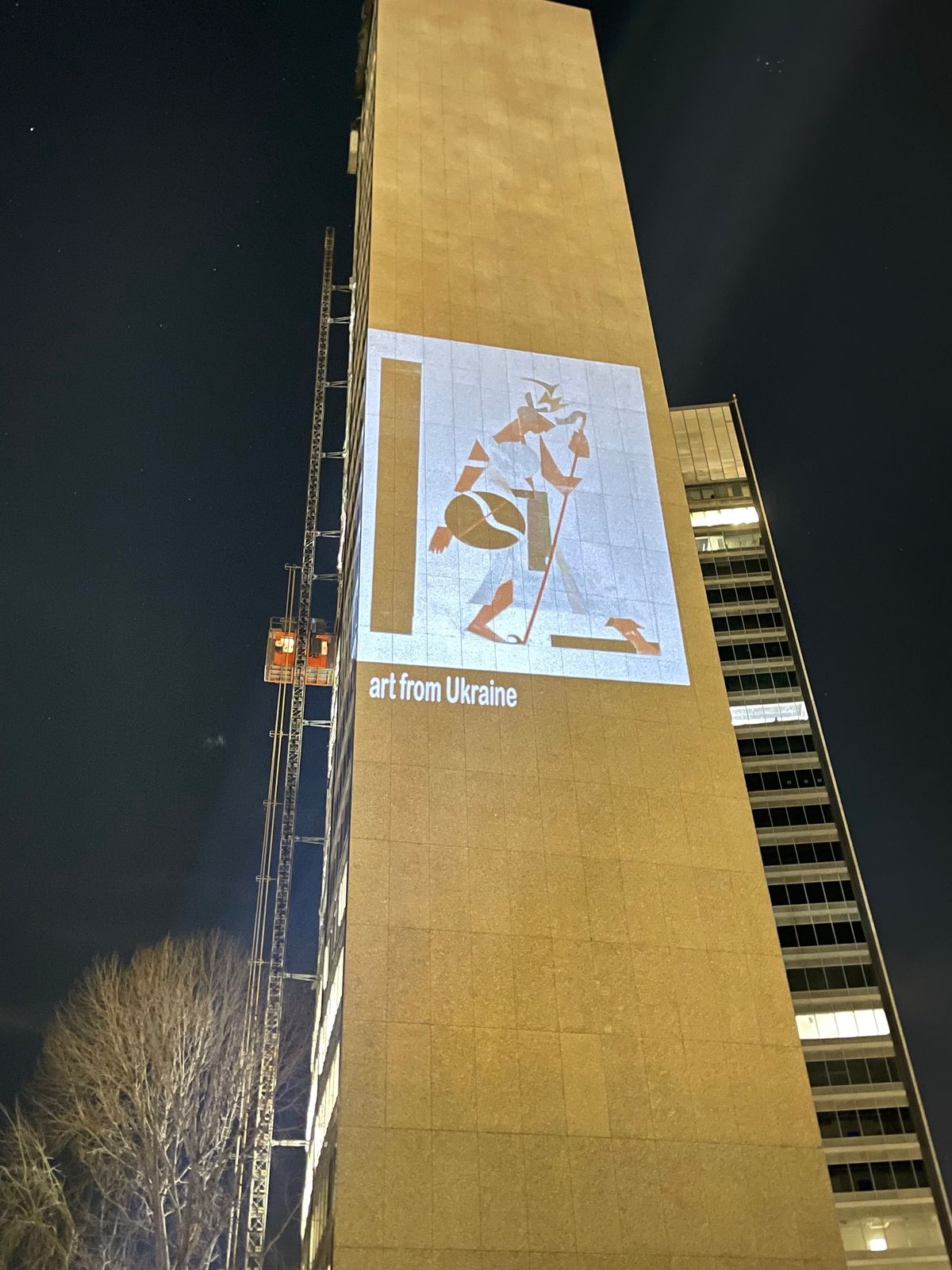Five days before Russia invaded Ukraine, a towering image of a Ukrainian warrior appeared on the exterior of a building in Oakland, California. The artwork, a striking assemblage of bold, geometric shapes arranged to convey a striding soldier with a shield in one hand and a weapon in the other, is based on a 1923 drawing by the Ukrainian artist and designer Anatol Petrytsky from the collection of the Museum Arsenal in Kyiv. Its appearance nearly 10,000km away came through a partnership between Museum Arsenal and Justice Murals, a Bay Area nonprofit that uses murals (painted and projected) to foster awareness and action around humanitarian and social justice issues.
“The images are really meant to represent Ukrainian culture,” says Justice Murals founder Carolyn Considine. “They’re historic, famous pieces that celebrate Ukraine, its heritage and its rich culture.”

A painting by Mykhailo Boychuk projected on the exterior of the Palace of Fine Arts museum in San Francisco Courtesy Justice Murals
In the days since, her group has continued to project images of Ukrainian art from Museum Arsenal throughout the Bay Area, including on the exterior of the Palace of Fine Arts museum in San Francisco, with staff from the local Ukrainian consulate in attendance. The next day, Russia began its invasion.
“My contact at Arsenal is telling me she’s hiding literally in her bathroom, hearing bombs going off, trying to figure out what to do,” Considine says. “She’s worried she’s not going to be able to contact me or contact her family—everything is up in the air right now, but she’s told me to keep on projecting, keep on talking about it.”
The projected artworks include a portrait painting by Mykhailo Boychuk (who, in 1917, co-founded the Ukrainian State Academy of Arts), a 1980 composition depicting bathers in the Black Sea by non-conformist painter Zoya Lerman, and a colourful 1990 painting of a flutist by Kyiv-born artist Aleksandr Agafonov. Since the invasion began they have been accompanied with the popular #StandWithUkraine hashtag and a QR code leading to a donation page to support Ukrainian forces and relief efforts, most recently in a 25 February projection in Oakland.

Aleksandr Agafonov's painting of a flutist projected onto the Alameda theatre in Oakland, California on 25 February Courtesy Justice Murals
Considine says the group's next projection of Ukrainian art is planned for 4 March. "We are reaching out to see if we can include some images of [pieces by] Maria Prymachenko," she adds; 25 works by Prymachenko were reportedly destroyed in a fire at a small museum near Kyiv.
For its part Museum Arsenal—which, as its name suggests, is housed in a former munitions factory and depot in the capital of Ukraine—has closed and, in statements posted on 24 and 28 February, urged its supporters to highlight Ukrainian contemporary art and called for a cultural boycott of Russia.


